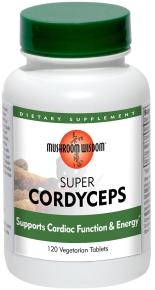Every year that goes by, your chances for vision loss go up. It’s a sad fact that by the age of 65, one in every eight adults will experience at least some amount of compromised vision.
Age-Related Eye Problems
The top causes of impaired vision include cataracts, age-related macular degeneration, glaucoma, and diabetic retinopathy. Here’s how you can help preserve your eyesight against these threats.
-
Cataracts
There are 24.4 million Americans age 40+ with cataracts. By the age of 75, half of all people will have them.
The clouding of the lens of the eye, which is the calling card of cataracts, is the top cause of correctable reduced vision. Cataracts develop slowly over time, which is why they are sometimes not noticed until vision impairment has progressed.
Factors that delay or prevent cataracts would greatly enhance the quality of life for many seniors. Nutrition researchers have eyed antioxidants for a while when it comes to cataracts, since free radicals are a major culprit in their formation. Consequently, antioxidants offer strong protection against the development and progression of cataracts.
Topping the list are vitamins C and E and the carotenoids lutein and zeaxanthin. Vitamin B2 also makes a strong case in the research for preventing cataracts.
-
Age-Related Macular Degeneration
Age-related macular degeneration (AMD), a leading cause of blindness, is a progressive disorder affecting the central part of the retina, called the macula.
The macula gets damaged from constant UV light exposure, but certain nutrients act as a shield against this damage.
As with cataracts, the carotenoids lutein and zeaxanthin are heavy-lifters here. Keeping levels of those two nutrients abundant pays off by lowering the risk of fading vision in the future. Pistachios are rich in lutein, and recent research shows that eating about two ounces of these nuts daily for 12 weeks leads to significant increases in a pigment that protects the retina.
The omega-3 fatty acids in fish oil also merit mention. Diets that include fish regularly, as well as this nutrient in supplement form, guard against AMD and can sometimes regain lost vision in certain people.
-
Glaucoma
Anyone over age 60 is considered at high risk of glaucoma—the condition that increases pressure in the eye (specifically on the optic nerve), which can result in blindness.
As with AMD, omega 3s show promise with this eye condition. Specifically, supplementing with DHA has been shown to reduce pressure in the eye, based on research in a population who already had glaucoma.
In addition, plenty of vitamin C—once again this antioxidant shows its support for healthy vision—is linked to protection from developing glaucoma.
-
Diabetic Retinopathy
People with diabetes (both Type 1 and Type 2) are at higher risk of diabetic retinopathy, making this condition a leading cause of vision impairment in adults.
The high levels of sugar in the blood can damage the tiny blood vessels in the retina. Keeping blood sugar levels under tight control is the most important way to minimize the risk of this vision hazard.
A few supplements can provide support, and once again several antioxidants (including the multi-talented lutein) claim top billing for being beneficial for diabetic retinopathy.
In one study, a daily antioxidant supplement (including vitamin E, coenzyme Q10, and Pycnogenol) improved eye health.
Similarly, stand-alone supplements of Pycnogenol have been documented to improve vision in those with early-stage diabetic retinopathy.
Symptoms of Impaired Vision
A surprising number of people live with undiagnosed age-related eye conditions—many of whom could be treated to improve their vision.
The following symptoms indicate a need to get your vision (or your loved one’s) checked out:
- Reading material held very closely or at an angle
- Changes in writing quality
- Overfilling glasses when pouring a drink
- Spilling food and difficulty cutting food
- Complaints that the lighting is always too poor to see properly
- Difficulty quickly identifying faces or objects
- Mis-reaching when trying to pick up an item
- Bumping into things
- Shuffling when walking or stepping hesitantly
- Walking up/down stairs more cautiously than before





